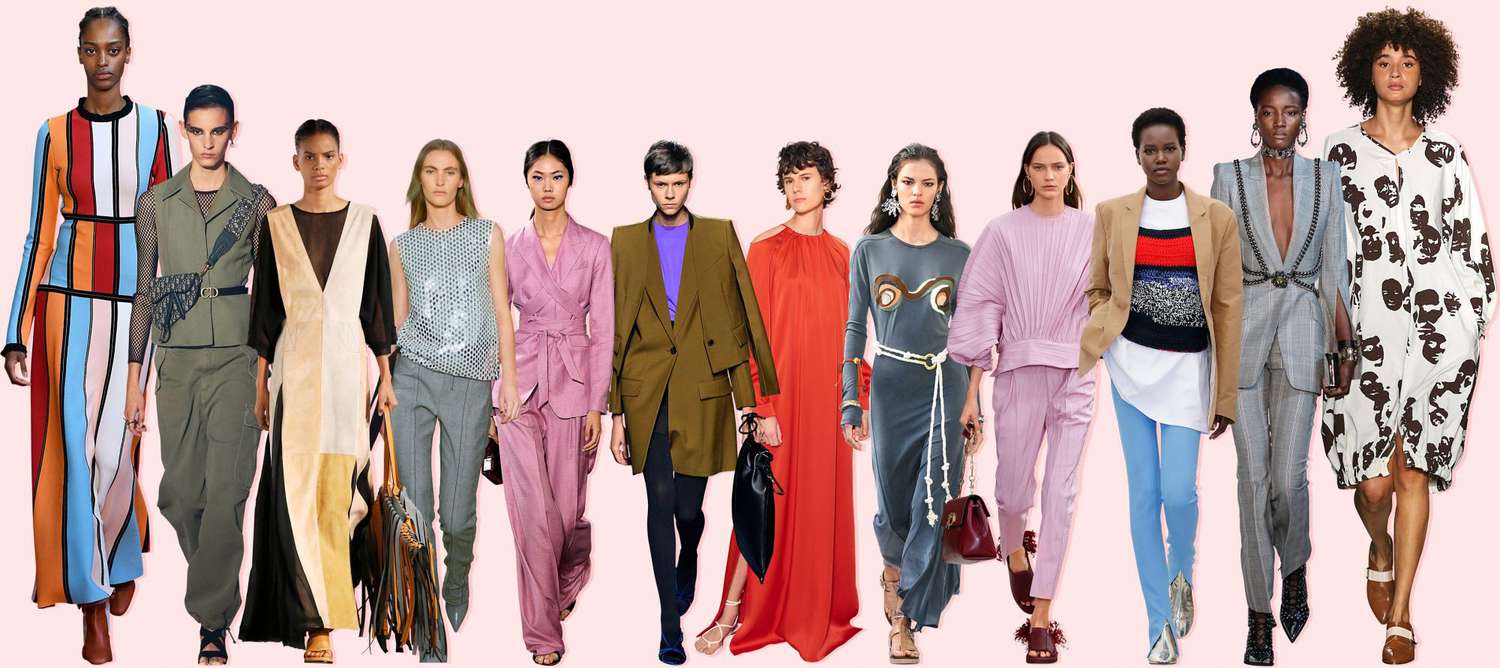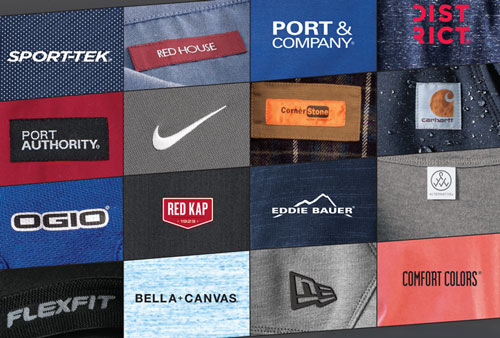Branded Clothing and the Rise of Recycled Fabric Use in Fashion
Branded Clothing and the Rise of Recycled Fabric Use in Fashion
Blog Article
Comprehending Clothing: The Significance of Material Choices in Your Wardrobe
The selection of fabric in clothing plays an essential function in both appearances and performance. Different materials offer differing levels of breathability, convenience, and durability, straight affecting the user's experience. Recognizing these subtleties can boost one's closet considerably. Yet, many neglect just how these choices can influence not simply personal style, however additionally sustainability. What material choices could redefine your wardrobe and align it with both design and obligation?
The Role of Textile in Style and Functionality

Common Textile Kinds and Their Features
When selecting clothing, understanding the attributes of typical material kinds is essential for making informed selections. Cotton, a widely-used all-natural fiber, is understood for its breathability, gentleness, and flexibility, making it appropriate for sportswear and day-to-day garments. Linen, another all-natural choice, flaunts superb moisture-wicking buildings and a distinctive texture, ideal for cozy climates.Wool, often favored for its warmth and toughness, differs in fineness; merino woollen is soft versus the skin, while coarser kinds are utilized for outerwear. Synthetic materials like polyester and nylon use durability and resistance to creases, making them prominent for activewear and traveling garments. Blends, which integrate natural and artificial fibers, can boost performance while keeping convenience. By identifying these fabric characteristics, people can pick clothing that straightens with their lifestyle and visual preferences.
Breathability and Convenience: Picking the Right Fabrics for Various Environments
Selecting the ideal fabrics for numerous climates can significantly boost comfort and total wearability. Breathable materials are important in hot environments, as they allow air flow and dampness evaporation. Fabrics such as cotton, linen, and moisture-wicking synthetics efficiently draw sweat far from the body, keeping the wearer cool and completely dry. Alternatively, in chillier environments, thicker fabrics like woollen or fleece give insulation while keeping breathability, making sure warmth without overheating.Additionally, the selection of textile weight plays a vital function; light-weight materials are more suitable for summer season, whereas heavier choices are matched for winter months wear. Comprehending the special properties of each material allows individuals to clothe suitably for varying weather problems. Inevitably, selecting comfy and breathable fabrics customized to particular environments can significantly boost daily convenience and enhance the general experience of putting on clothing.
Resilience and Care: Exactly How Textile Affects Longevity of Your Wardrobe
Choosing the appropriate products can significantly impact the sturdiness and treatment needs of a wardrobe. Fabrics such as cotton and polyester are known for their strength and ease of maintenance, making them ideal for everyday wear. In contrast, fragile materials like silk and shoelace call for more cautious handling and specialized cleansing techniques, which can enhance the time and effort required for care. Branded Clothing.Durability is likewise affected by the material's weave and coating; firmly woven textiles often tend to stand up to deterioration far better than freely woven choices. In addition, synthetic blends often supply boosted toughness, incorporating the very best qualities of numerous fibers.Understanding the treatment guidelines for each material is crucial, as inappropriate washing or drying can lead to early wear. Eventually, picking long lasting products can lead to a longer-lasting closet, lowering the frequency of substitutes and contributing to a more sustainable fashion selection
The Effect of Textile on Fit and Shape

Lasting Textile Selections: Making Eco-Friendly Choices
The influence of fabric extends beyond fit and shape to incorporate ecological variables, prompting a growing passion in sustainable fabric selections. Green fabrics, such as organic cotton, hemp, and Tencel, are acquiring traction amongst customers who focus on sustainability in their wardrobes. These products are typically generated with less chemicals and water, decreasing their eco-friendly footprint.Additionally, recycled fabrics, made from post-consumer waste, use a cutting-edge remedy to the fabric market's pollution trouble. Brands progressively embrace openness in their sourcing techniques, allowing consumers to make informed decisions about their purchases.Choosing sustainable fabrics not only sustains honest practices but also encourages the fashion business to embrace more accountable production techniques. As recognition of environmental problems rises, people are urged to assess the lasting influence of their material choices, promoting an activity in the direction of a much more environmentally aware and sustainable strategy to fashion.
Boosting Style: Exactly How Textile Can Change a Clothing
While many might concentrate on color and cut when choosing an outfit, the choice of material plays a crucial function in boosting style and improving overall look. Different products share distinctive state of minds and messages; as an example, silk exudes high-end and refinement, while jeans uses an informal, kicked back ambiance. The appearance and drape of a fabric can significantly alter the silhouette, with organized fabrics offering a refined look and softer ones creating a more fluid, loosened up aesthetic.Moreover, the weight of the fabric influences wearability throughout periods. Light-weight materials like bed linen and cotton are ideal for summer, while heavier materials such as wool and velvet give heat and elegance in chillier months. Recognizing material homes, such as breathability and stretch, likewise empowers people to make enlightened options that boost convenience without jeopardizing design. Eventually, the right fabric can transform an outfit from average to amazing, making it an essential factor to consider in any wardrobe.
Regularly Asked Inquiries
Just how Do I Determine the Material Material of My Clothing?
To recognize fabric material, one can analyze care labels, conduct burn Click This Link examinations for fiber recognition, or speak with fabric swatches. These techniques help differentiate materials, making certain notified choices for apparel care and maintenance in daily wear.
Can Material Option Affect My Mood or Confidence?
Material choice can greatly affect an individual's state of mind and confidence. Branded Clothing. Particular materials might evoke sensations of convenience or sophistication, while others can really feel unflattering or limiting, eventually influencing self-perception and emotional health throughout the day
What Fabrics Are Finest for Sensitive Skin?
For individuals with delicate skin, natural fabrics like bamboo, cotton, and linen are usually advised. These materials are breathable, hypoallergenic, and less most likely to cause irritability, making them suitable options for comfort and skin wellness.
How Do I Properly Laundry and Look After Different Fabrics?
To correctly wash and care for different textiles, one must consider each product's particular requirements, consisting of temperature level settings, detergents, and drying techniques, ensuring longevity and preserving the material's initial top qualities for excellent usage.
Exist Certain Fabrics for Athletic or Efficiency Wear?
Sports or performance wear frequently makes use of materials such as spandex, nylon, and polyester. These products are made for moisture-wicking, breathability, and adaptability, enhancing movement and convenience during physical activities while supplying longevity and support. Conversely, in colder environments, thicker textiles like woollen or fleece offer insulation while preserving breathability, making certain heat without overheating.Additionally, the selection of material weight plays a vital function; light-weight fabrics are better for summer season, whereas much heavier alternatives are fit for winter season wear. In contrast, delicate products like silk and shoelace call for more mindful handling and specialized cleansing techniques, which can boost the time and effort needed for care.Durability is also affected by the fabric's weave and finish; tightly woven textiles have a tendency to stand up to wear and tear far better than freely woven choices. In contrast, rigid materials can restrict activity however provide a timeless, polished look.Moreover, the density and texture of the textile can affect the visual assumption of body form. The impact of fabric prolongs past fit and silhouette to include ecological variables, motivating a growing rate of interest in sustainable fabric choices. special info The texture and drape of a fabric can substantially change the silhouette, with structured textiles offering a sleek appearance and softer ones creating an extra fluid, unwinded aesthetic.Moreover, the weight of the textile influences wearability throughout seasons.
Report this page